Great Books of the World
Science Fiction
Science fiction deals with imaginative content such as futuristic settings, science, and technology, space travel, time travel, and other worlds. Exploring the consequences of scientific innovations is one purpose of science fiction. It has been used by authors as a device to discuss philosophical ideas such as identity, desire, morality, and social structure.
27 titles sorted by popularity
-
 Frankenstein
Mary Wollstonecraft Shelley
Frankenstein
Mary Wollstonecraft Shelley
Frankenstein; or, The Modern Prometheus is a novel written by Mary Shelley about eccentric scientist Victor Frankenstein, who creates a grotesque creature in an unorthodox scientific experiment. Shelley started writing the story when she was nineteen, and the novel was published when she was twenty-one. The first edition was published anonymously in London in 1818. Shelley's name appears on the second edition, published in France in 1823.
-
 The Strange Case of Dr. Jekyll and Mr. Hyde
Robert Louis Stevenson
The Strange Case of Dr. Jekyll and Mr. Hyde
Robert Louis Stevenson
Strange Case of Dr Jekyll and Mr Hyde is the original title of a novella written by the Scottish author Robert Louis Stevenson that was first published in 1886. The work is commonly known today as The Strange Case of Dr. Jekyll and Mr. Hyde, Dr. Jekyll and Mr. Hyde, or simply Jekyll & Hyde. It is about a London lawyer named Gabriel John Utterson who investigates strange occurrences between his old friend, Dr. Henry Jekyll, and the evil Edward Hyde.
-
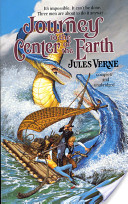 A Journey to the Centre of the Earth
Jules Verne
A Journey to the Centre of the Earth
Jules Verne
Jules Verne's third science fiction novel describes the discovery and exploration of a secret tunnel which leads through a volcano to the centre of the Earth. The leader of the expedition, together with his ward and joined by his nephew and an Icelandic guide commence the journey.
-
 Twenty Thousand Leagues Under the Sea
Jules Verne
Twenty Thousand Leagues Under the Sea
Jules Verne
Twenty Thousand Leagues Under the Sea is a classic science fiction novel by French writer Jules Verne published in 1870. It tells the story of Captain Nemo and his submarine Nautilus, as seen from the perspective of Professor Pierre Aronnax. The original edition had no illustrations; the first illustrated edition was published by Hetzel with illustrations by Alphonse de Neuville and Édouard Riou.
-
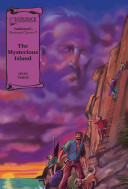 The Mysterious Island
Jules Verne
The Mysterious Island
Jules Verne
The Mysterious Island is a novel by Jules Verne, published in 1874. The original edition, published by Hetzel, contains a number of illustrations by Jules Férat. The novel is a crossover sequel to Verne's famous Twenty Thousand Leagues Under the Sea and In Search of the Castaways, though thematically it is vastly different from those books. An early draft of the novel, initially rejected by Verne's publisher and wholly reconceived before publication, was titled Shipwrecked Family: Marooned With Uncle Robinson, seen as indicating the influence on the novel of Robinson Crusoe and The Swiss Family Robinson.
-
 Anthem
Ayn Rand
Anthem
Ayn Rand
Anthem is a dystopian fiction novella by Ayn Rand, written in 1937 and first published in 1938 in England. It takes place at some unspecified future date when mankind has entered another dark age characterized by irrationality, collectivism, and socialistic thinking and economics. Technological advancement is now carefully planned and the concept of individuality has been eliminated .
-
 A Princess of Mars
Edgar Rice Burroughs
A Princess of Mars
Edgar Rice Burroughs
A Princess of Mars is a science fantasy novel by Edgar Rice Burroughs, the first of his Barsoom series. Full of swordplay and daring feats, the novel is considered a classic example of 20th century pulp fiction. It is also a seminal instance of the planetary romance, a sub-genre of science fantasy that became highly popular in the decades following its publication. Its early chapters also contain elements of the Western. The story is set on Mars, imagined as a dying planet with a harsh desert environment. This vision of Mars was based on the work of the astronomer Percival Lowell, whose ideas were widely popularized in the late 19th and early 20th centuries.
-
 Flatland: a romance of many dimensions (Illustrated)
Edwin Abbott Abbott
Flatland: a romance of many dimensions (Illustrated)
Edwin Abbott Abbott
Flatland: A Romance of Many Dimensions is an 1884 satirical novella by the English schoolmaster Edwin Abbott Abbott. Writing pseudonymously as "A Square", Abbott used the fictional two-dimensional world of Flatland to offer pointed observations on the social hierarchy of Victorian culture. However, the novella's more enduring contribution is its examination of dimensions.
-
 The Gods of Mars
Edgar Rice Burroughs
The Gods of Mars
Edgar Rice Burroughs
The Gods of Mars is a 1918 Edgar Rice Burroughs science fantasy novel, the second of his famous Barsoom series. It was first published in All-Story as a five-part serial in the issues for January–May 1913. It was later published as a complete novel by A. C. McClurg in September, 1918.
-
 From the Earth to the Moon; and, Round the Moon
Jules Verne
From the Earth to the Moon; and, Round the Moon
Jules Verne
From the Earth to the Moon is an 1865 novel by Jules Verne. It tells the story of the Baltimore Gun Club, a post-American Civil War society of weapons aficionados, and their attempts to build an enormous sky-facing Columbiad space gun and launch three people — the Gun Club's president, his Philadelphian armor-making rival, and a French poet — in a projectile with the goal of a moon landing.
-
 Warlord of Mars
Edgar Rice Burroughs
Warlord of Mars
Edgar Rice Burroughs
The Warlord of Mars is a science fantasy novel written by Edgar Rice Burroughs, the third of his famous Barsoom series. Burroughs began writing it in June, 1913, going through five working titles; Yellow Men of Barsoom, The Fighting Prince of Mars, Across Savage Mars, The Prince of Helium, and The War Lord of Mars.
-
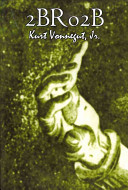 2 B R 0 2 B
Kurt Vonnegut
2 B R 0 2 B
Kurt Vonnegut
2BR02B is a science fiction short story by Kurt Vonnegut, originally published in the digest magazine Worlds of If Science Fiction, January 1962, and collected in Vonnegut's Bagombo Snuff Box . The title is pronounced "2 B R naught 2 B", referencing the famous phrase "to be, or not to be" from William Shakespeare's Hamlet, Prince of Denmark. In this story, the title refers to the telephone number one dials to schedule an assisted suicide with the Federal Bureau of Termination. Vonnegut's 1965 novel God Bless You, Mr. Rosewater describes a story by this name, attributing it to his recurring character Kilgore Trout, although the plot summary given is closer in nature to the eponymous tale from the short-story collection Welcome to the Monkey House.
-
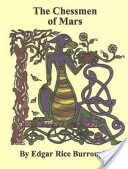 The Chessmen of Mars
Edgar Rice Burroughs
The Chessmen of Mars
Edgar Rice Burroughs
The Chessmen of Mars is an Edgar Rice Burroughs science fantasy novel, the fifth of his famous Barsoom series. Burroughs began writing it in January, 1921, and the finished story was first published in Argosy All-Story Weekly as a six-part serial in the issues for February 18 and 25 and March 4, 11, 18 and 25, 1922. It was later published as a complete novel by A. C. McClurg in November 1922.
-
 Thuvia, Maid of Mars
Edgar Rice Burroughs
Thuvia, Maid of Mars
Edgar Rice Burroughs
Thuvia, Maid of Mars is a science fantasy novel by Edgar Rice Burroughs, the fourth of the Barsoom series. The principal characters are the Son of John Carter of Mars, Carthoris, and Thuvia of Ptarth, each of whom appeared in the previous two novels.
-
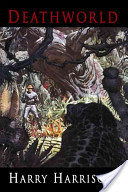 Deathworld
Harry Harrison
Deathworld
Harry Harrison
DEATHWORLD centers on Jason dinAlt, a professional gambler who uses his somewhat erratic psionic abilities to tip the odds in his favor. He is challenged by a man named Kerk Pyrrus (who turns out to be the ambassador from the planet Pyrrus) to turn a large amount of money into an immense sum by gambling at a government-run casino. He succeeds and survives the planetary government's desperate efforts to steal back the money. In a fit of ennui, he decides to accompany Kerk to his home, despite being warned that it is the deadliest world ever colonized by humans...DEATHWORLD! DEATHWORLD is one of the classics of the Golden Age of science fiction, born in the pages of Astounding Science Fiction under the editorship of John W. Campbell, Jr.
-
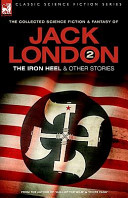 The Iron Heel
Jack London
The Iron Heel
Jack London
The Iron Heel is a dystopian novel by American writer Jack London, first published in 1908.
-
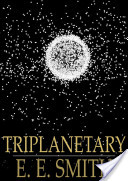 Triplanetary
E. E. Smith
Triplanetary
E. E. Smith
Triplanetary is a science fiction novel and space opera by E. E. Smith. It was first serialized in the magazine Amazing Stories in 1934. After the Lensman series was published, Smith expanded and reworked the novel into the first of two Lensman prequels . It was published in book form in 1948 by Fantasy Press.
-
 At the Earth's Core
Edgar Rice Burroughs
At the Earth's Core
Edgar Rice Burroughs
At the Earth's Core is a 1914 fantasy novel by Edgar Rice Burroughs, the first in his series about the fictional "hollow earth" land of Pellucidar. It first appeared as a four-part serial in All-Story Weekly from April 4–25, 1914. It was first published in book form in hardcover by A. C. McClurg in July, 1922.
-
 The House on the Borderland
William Hope Hodgson
The House on the Borderland
William Hope Hodgson
The House on the Borderland is a supernatural horror novel by British fantasist William Hope Hodgson.
-
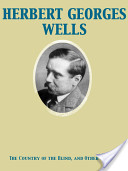 The Country of the Blind, and Other Stories
H. G. Wells
The Country of the Blind, and Other Stories
H. G. Wells
The Country of the Blind and Other Stories is a collection of thirty-three fantasy and science fiction short stories written by the English author H. G. Wells between 1894 and 1909. It was first published by Thomas Nelson and Sons in 1911. All the stories had first been published in various weekly and monthly periodicals. Twenty-seven of the stories had also been previously published in five earlier story collections by Wells.
-
 The War of the Worlds
H. G. Wells
The War of the Worlds
H. G. Wells
The War of the Worlds is a science fiction novel by H. G. Wells, first published in 1898. It is the first-person narrative of the adventures of an unnamed protagonist and his brother in Surrey and London as Earth is invaded by Martians. Written between 1895 and 1897, it is one of the earliest stories that detail a conflict between mankind and an extraterrestrial race. The novel is one of the most commented-on works in the science fiction canon.
-
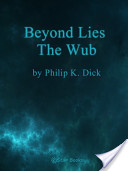 Beyond Lies the Wub
Philip K. Dick
Beyond Lies the Wub
Philip K. Dick
"Beyond Lies the Wub" is a science fiction short story by Philip K. Dick. It was his first published story, originally appearing in Planet Stories in July, 1952.
-
 Looking Backward, 2000 to 1887
Edward Bellamy
Looking Backward, 2000 to 1887
Edward Bellamy
Looking Backward: 2000-1887 is a utopian science fiction novel by Edward Bellamy, a lawyer and writer from Chicopee Falls, Massachusetts; it was first published in 1887. According to Erich Fromm, Looking Backward is "one of the most remarkable books ever published in America".
-
 The Big Trip Up Yonder
Kurt Vonnegut
The Big Trip Up Yonder
Kurt Vonnegut
"Tomorrow and Tomorrow and Tomorrow" is a short story by Kurt Vonnegut written in 1953, and first published in Galaxy Science Fiction magazine in January 1954. The title comes from Shakespeare's famous line from the play Macbeth "Tomorrow and tomorrow and tomorrow." The name "Tomorrow and Tomorrow and Tomorrow" appears in Vonnegut's collection of short stories, Welcome to the Monkey House. The story was originally titled "The Big Trip Up Yonder" when published in Galaxy Science Fiction magazine.
-
 The Skull
Philip K. Dick
The Skull
Philip K. Dick
"The Skull" is a science fiction short story by Philip K. Dick, first published in 1952 in If, and later in The Collected Stories of Philip K. Dick. It has since been republished several times, including in Beyond Lies the Wub in 1988.
-
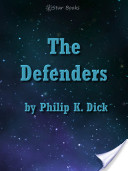 The Defenders
Philip K. Dick
The Defenders
Philip K. Dick
"The Defenders" is a 1953 science fiction short story by American author Philip K. Dick, and the basis for Dick's 1964 novel The Penultimate Truth. It is one of several of his short stories to be expanded into a novel. The short story was first published in the January 1953 issue of Galaxy Science Fiction.
-
 The Crystal Crypt
Philip K. Dick
The Crystal Crypt
Philip K. Dick
The Crystal Crypt is a science fiction short story by Philip K. Dick, first published in the January 1954 edition of Planet Stories and later published in Beyond Lies the Wub in 1988.